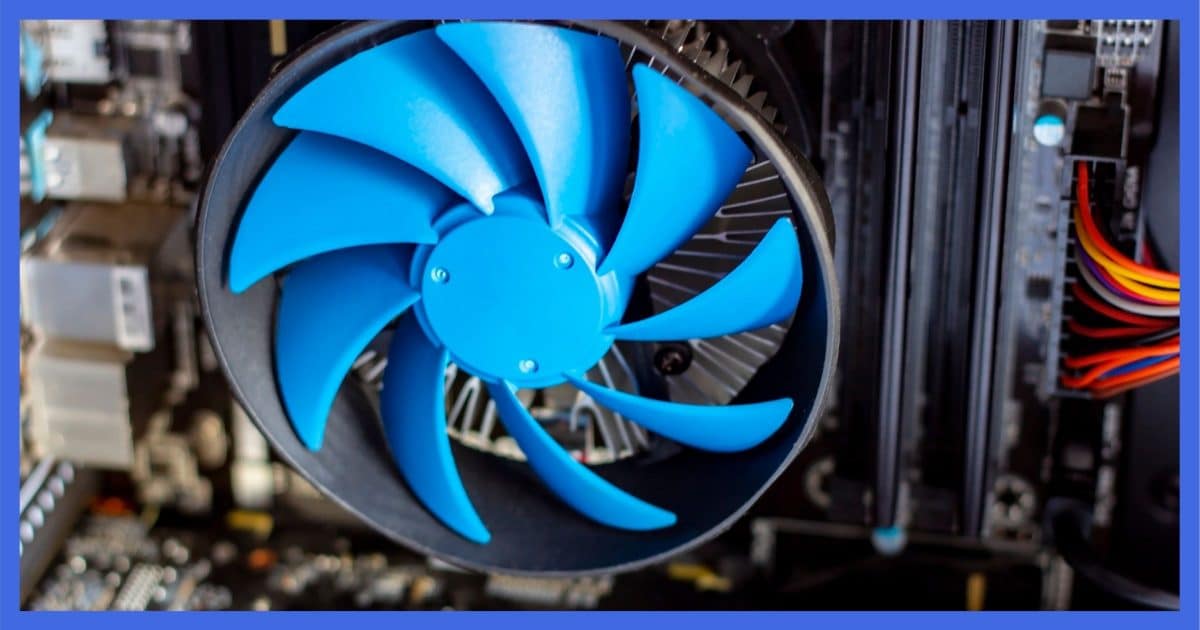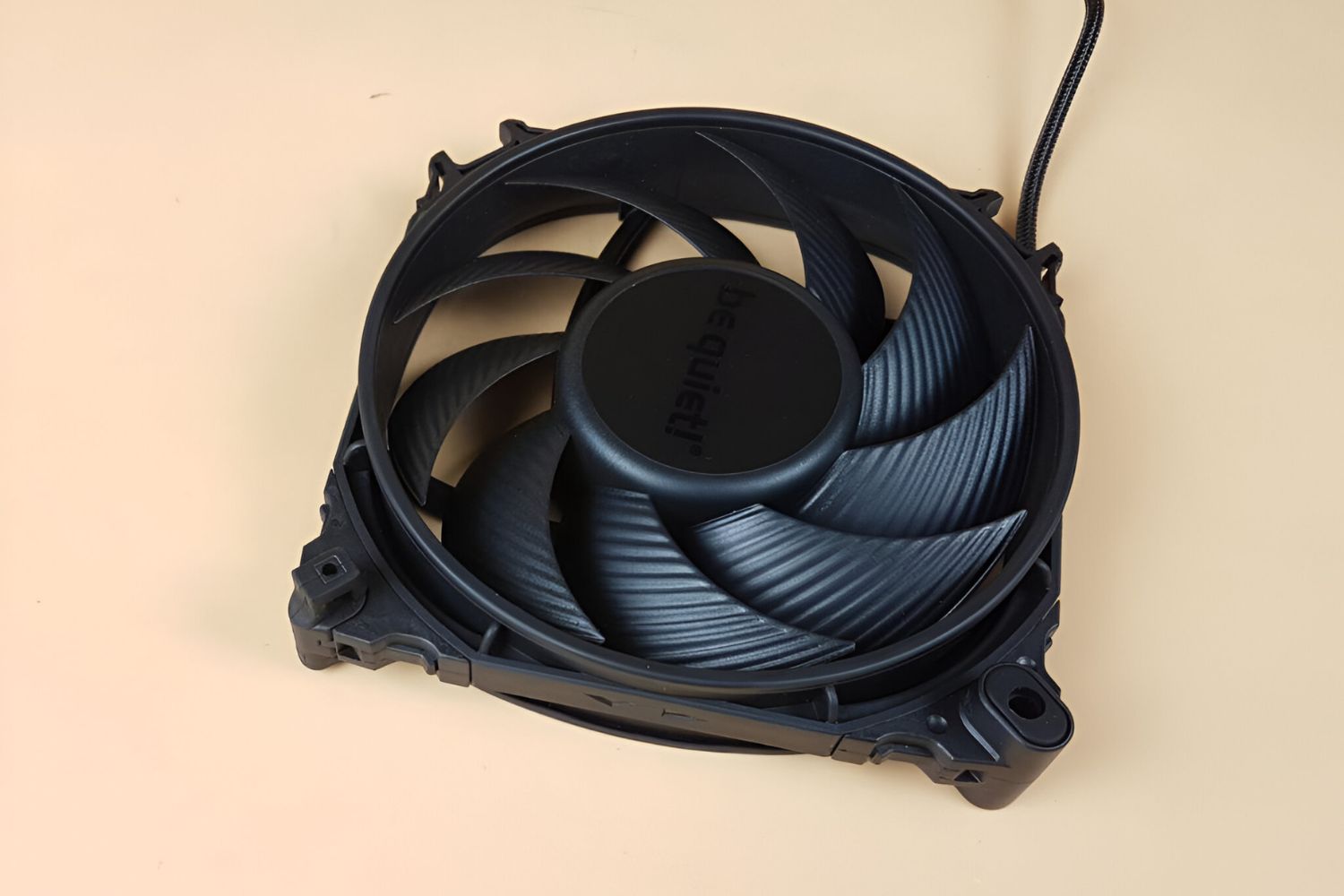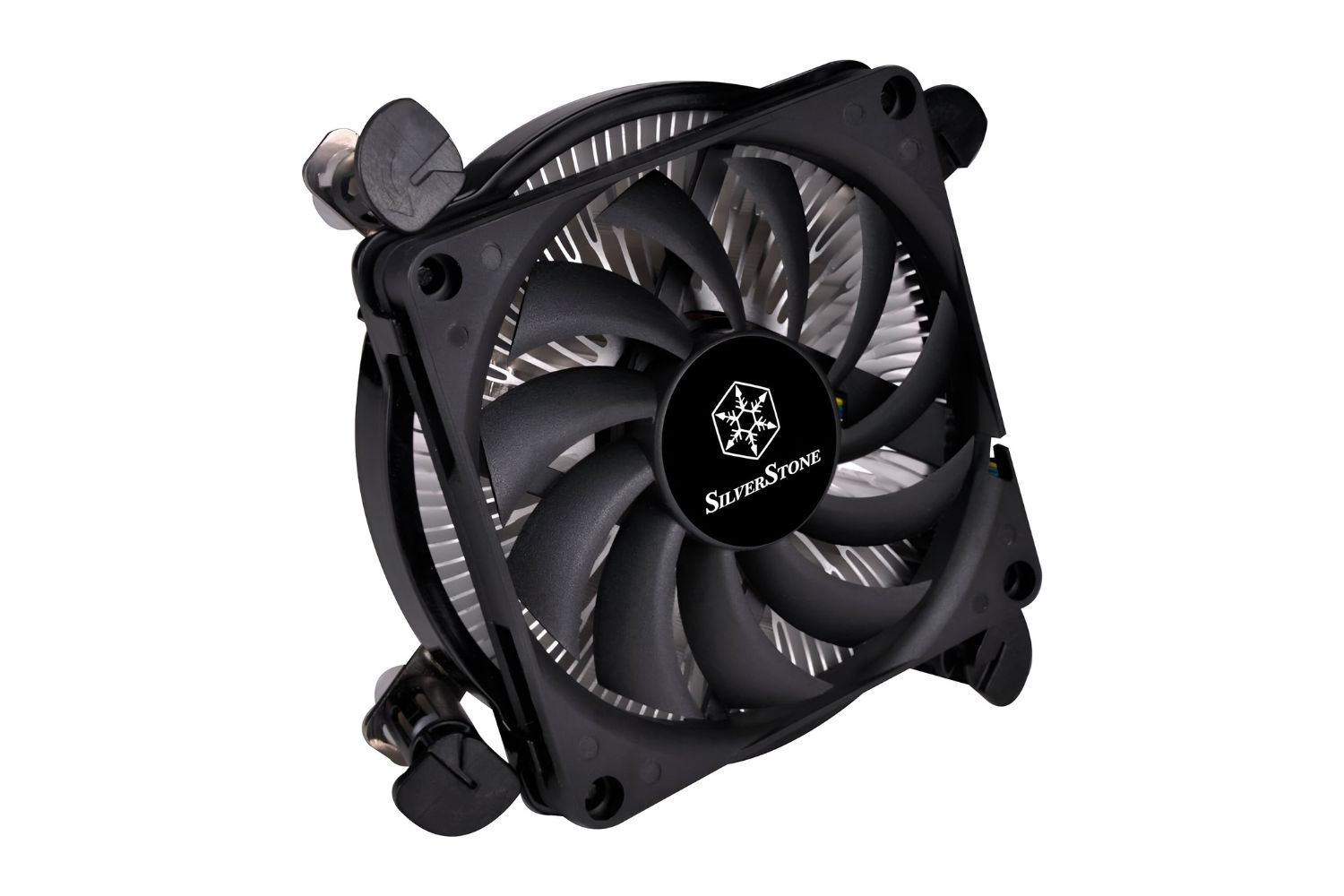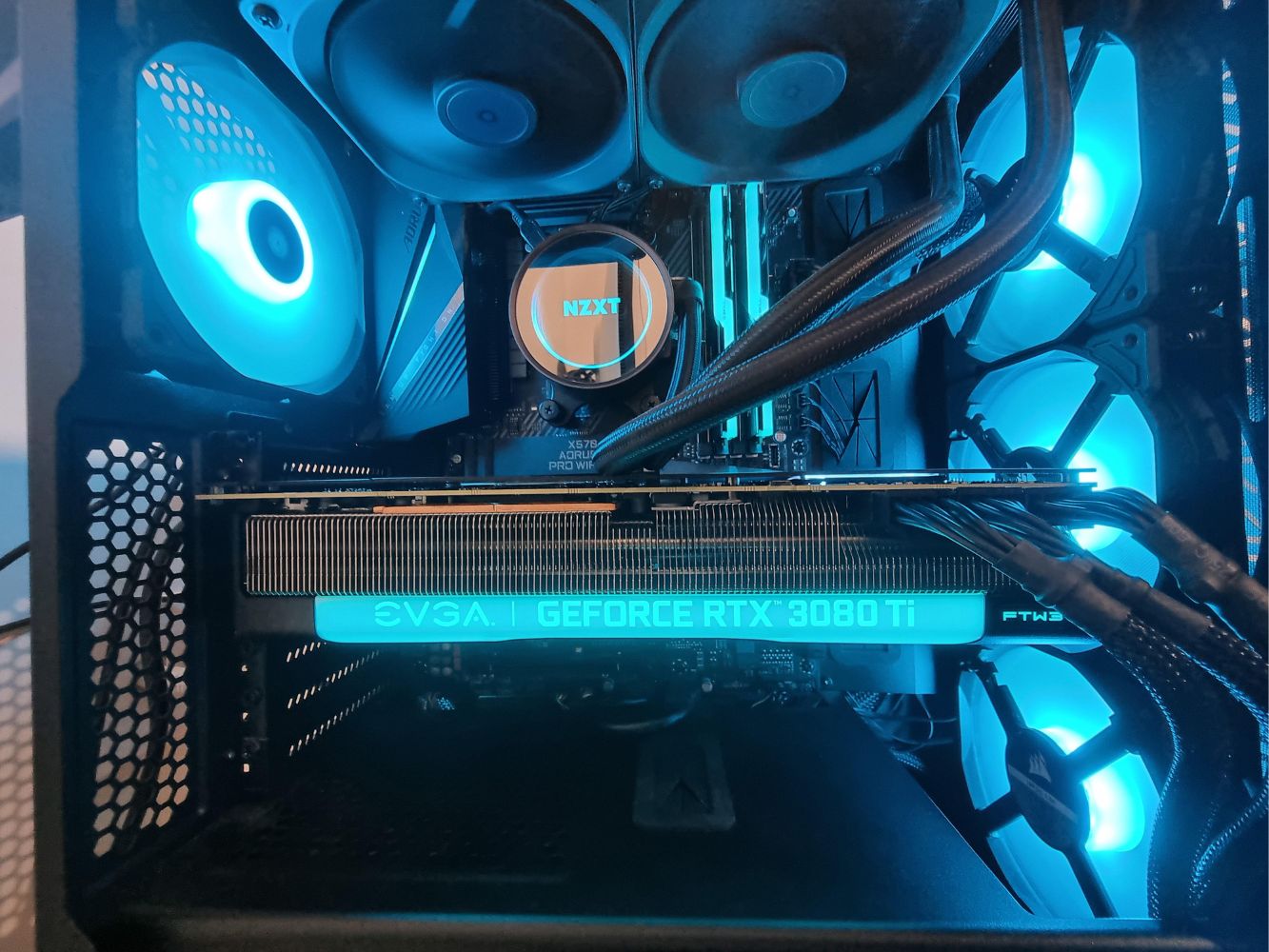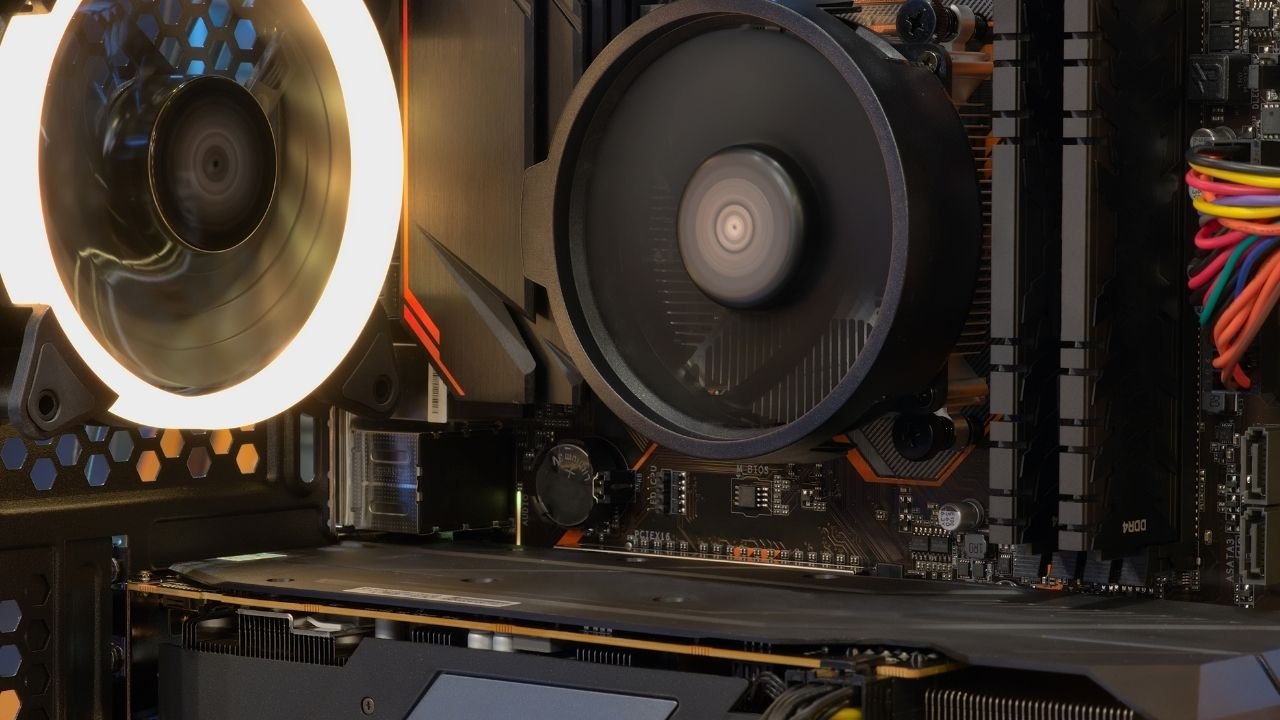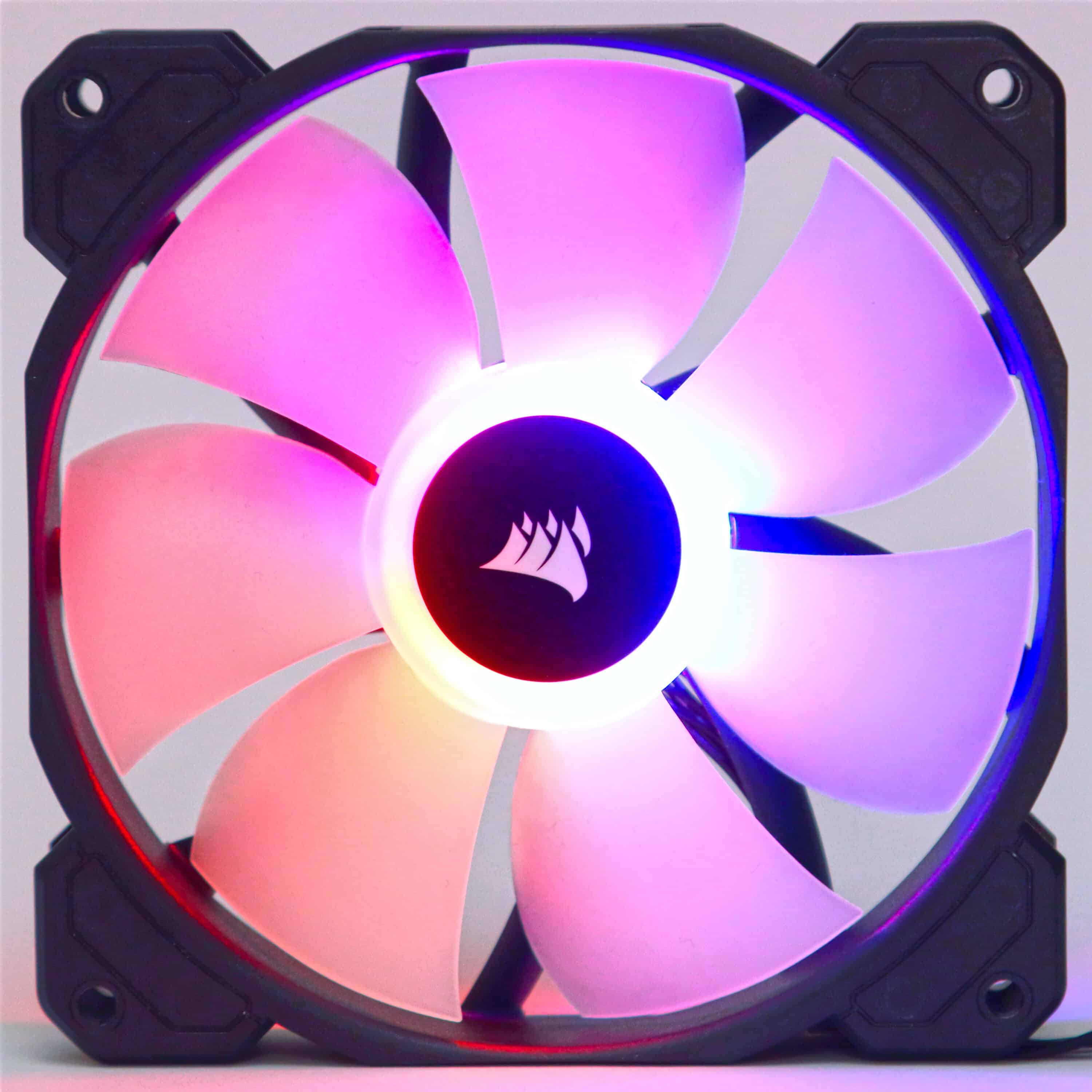Introduction
Welcome to the world of computer fan operation! Whether you are a seasoned computer enthusiast or a casual user, understanding the RPM (rotations per minute) of your case fan is essential for efficient cooling and optimal performance of your system. The RPM value represents how fast the fan blades rotate, determining the amount of air being moved and the cooling capacity of the fan. As a result, knowing the intended RPM of your case fan is crucial for making informed decisions about fan replacement, troubleshooting temperature issues, or simply ensuring proper airflow within your computer.
In this article, we will explore various methods to find out what RPM a case fan is supposed to have. By following these steps, you can determine the ideal RPM for your fan, allowing you to troubleshoot any performance issues, upgrade your system, or optimize your cooling setup.
Understanding the RPM of your case fan is particularly important because running the fan at an insufficient or excessive RPM can lead to negative consequences. Running the fan too slow may result in insufficient cooling, leading to increased temperatures and potential damage to sensitive computer components. Conversely, running the fan at excessively high RPMs can cause unnecessary noise, vibration, and strain on the fan motor, potentially shortening its lifespan. Hence, it is crucial to ascertain the correct RPM for your fan to strike the perfect balance between cooling efficiency and noise levels.
Now that we recognize the significance of knowing the RPM of your case fan, let’s delve into the various methods available to find out this vital information. By the end of this article, you will have a clear understanding of how to identify the intended RPM of your case fan effectively.
Why is knowing the RPM important?
Understanding the RPM (rotations per minute) of your case fan is crucial for several reasons. Let’s explore why knowing the RPM of your case fan is important:
1. Temperature Regulation: The RPM of a case fan directly affects its cooling capability. By knowing the intended RPM, you can ensure that your fan is operating at its optimal speed to effectively regulate the temperature inside your computer. If the fan is running too slow, it may not provide sufficient airflow, resulting in higher temperatures and potential overheating. On the other hand, if the fan is running too fast, it may create unnecessary noise and excessive vibration without providing significant cooling benefits. Therefore, understanding the RPM helps you maintain ideal temperatures for your system’s components.
2. Performance Optimization: Different computer components have specific temperature thresholds beyond which their performance may be compromised. By knowing the RPM of your case fan, you can monitor and adjust its speed to ensure that these components, such as the CPU and GPU, remain within their recommended temperature ranges. Optimizing fan speed can lead to improved performance and longevity of these components, especially during resource-intensive tasks like gaming or rendering.
3. Noise Reduction: Case fans operating at higher RPMs tend to generate more noise. If you want a quieter computer, knowing the intended RPM of your case fan allows you to select quieter fans or adjust the fan speed to achieve a balance between cooling performance and noise levels. By minimizing excessive fan noise, you can create a more pleasant and peaceful computing environment.
4. Troubleshooting: In the event of temperature-related issues or performance inconsistencies, knowing the intended RPM of your case fan can help in troubleshooting. If your computer’s temperatures are consistently high despite your efforts to maintain proper airflow, checking the RPM can identify whether the fan is functioning at its intended speed. If the fan is not reaching its expected RPM, it may indicate a potential problem with the fan itself or its connection to the motherboard.
5. Upgrading and Replacing Fans: If you plan to upgrade or replace your case fan, knowing the intended RPM is essential for selecting the right replacement. By matching the RPM with a fan of similar specifications, you can ensure a seamless transition without compromising the cooling efficiency of your system.
By understanding the significance of knowing the RPM of your case fan, you can optimize your computer’s cooling performance, enhance system stability, reduce noise levels, and troubleshoot temperature-related issues effectively.
Checking the fan manufacturer’s specification
One of the easiest and most reliable ways to find out the RPM of a case fan is by checking the fan manufacturer’s specification. Most reputable fan manufacturers provide detailed product datasheets or manuals that include essential information, such as the fan’s RPM rating.
Here’s how you can check the fan manufacturer’s specification to determine the RPM:
1. Locate the fan documentation: Start by finding the product documentation that came with your case fan. This could be a physical manual included in the packaging or a digital version available on the manufacturer’s website. If you no longer have the documentation, you can try searching for the fan model online to find the specifications.
2. Look for the RPM information: Once you have the documentation or specifications sheet in front of you, look for the RPM value. It is usually listed under the fan’s technical specifications. The RPM may be expressed as a single value, such as “1200 RPM,” or as a range, such as “800-1500 RPM.”
3. Consider any additional information: In addition to the RPM, the fan manufacturer’s specification may provide other relevant information, such as airflow rating, noise level, and power consumption. These details can further aid in selecting the right fan for your cooling needs.
4. Validate the information: As you come across the RPM value, take a moment to ensure that it aligns with the fan you are currently using. In some cases, manufacturers may offer different variants of a fan with varying RPM ratings, so double-checking the model number or any distinguishing features can help confirm the correct specification.
If the fan manufacturer’s specification is not readily available, consider reaching out to the manufacturer’s customer support. They should be able to provide you with the information you need or guide you to the appropriate resources.
By checking the fan manufacturer’s specification, you can obtain accurate and reliable information about the RPM of your case fan, allowing you to make informed decisions regarding your computer’s cooling setup.
Using a tachometer
If you don’t have access to the fan’s documentation or if the information provided is unclear or unavailable, you can use a tachometer to measure the RPM of your case fan. A tachometer is a device specifically designed to measure the rotational speed of a fan or other rotating objects. Here’s how you can use a tachometer to determine the RPM:
1. Choose a suitable tachometer: There are various types of tachometers available in the market, ranging from handheld digital devices to smartphone apps. Select a tachometer that suits your needs and preferences. Ensure that the tachometer is compatible with measuring fan RPM.
2. Prepare the fan: Before using the tachometer, ensure that your case fan is accessible and unobstructed for accurate measurement. Remove any fan filters or grills that may interfere with the tachometer’s sensor.
3. Position the tachometer: Follow the manufacturer’s instructions for positioning the tachometer. In most cases, you will need to place the sensor close to or directly onto the fan’s hub or blades. The tachometer will detect the rotations and calculate the RPM accordingly.
4. Start the fan: Power on your computer and start the fan for measurement. Make sure the fan is running at its normal operating speed for accurate RPM reading.
5. Take the reading: Use the tachometer as instructed to measure the fan’s RPM. The device should display the current RPM of the fan. Keep in mind that due to slight variations in measurement, it is recommended to take multiple readings and calculate an average for a more accurate representation of the fan’s RPM.
6. Validate the measurement: Compare the obtained RPM readings with the fan’s expected RPM range, if available. If the measured RPM falls within the expected range, you can consider it as the intended RPM for your case fan.
Using a tachometer can be a reliable method to measure the RPM of your case fan when other sources of information are unavailable. However, it is worth noting that the accuracy may vary depending on the quality of the tachometer used. Therefore, it is recommended to verify the measurement with other methods to ensure accuracy.
By utilizing a tachometer, you can determine the RPM of your case fan and make informed decisions regarding cooling optimization, troubleshooting, or fan replacement.
Using software to check fan speed
Another convenient method to check the fan speed of your case fan is by using software. There are several software applications available that allow you to monitor the RPM of your fans in real time. Here’s how you can utilize software to check the fan speed:
1. Choose fan monitoring software: Start by selecting a reputable fan monitoring software that is compatible with your operating system. Some popular options include SpeedFan, HWMonitor, and Open Hardware Monitor. Ensure that the software supports the specific sensors and fans in your computer.
2. Install and launch the software: Download and install the selected software on your computer. Launch the software and allow it to detect the sensors and fans present in your system.
3. Locate the fan speed: Once the software has successfully detected your system’s fans, it should display the relevant information, including the fan speed. Look for the RPM value associated with your case fan. In some cases, the software may also provide a graph or a real-time display of the fan speed fluctuations.
4. Validate the reading: Check the displayed RPM reading against the manufacturer’s specification or any available documentation for your case fan. It is essential to ensure that the measured RPM corresponds to the expected range for your particular fan model.
5. Monitor in real time: Many fan monitoring software applications allow you to continuously monitor the fan speed in real time. This feature can be particularly helpful when conducting performance tests, troubleshooting temperature issues, or adjusting fan settings to achieve desired cooling and noise levels.
6. Customize fan profiles (optional): Some fan monitoring software may offer additional features, such as fan control or the ability to create custom fan profiles. These options enable you to adjust the fan speed manually or automatically based on temperature thresholds, further optimizing your cooling setup.
Using software to check the fan speed provides a convenient and real-time method for monitoring the RPM of your case fan. It allows you to assess the performance of your fan and make adjustments as needed.
Remember to regularly check the fan speed using the software to ensure that it is operating within the desired RPM range for optimal cooling and system performance.
Checking the motherboard’s BIOS settings
Another way to determine the fan speed of your case fan is by checking the motherboard’s BIOS settings. The BIOS (Basic Input/Output System) is a firmware embedded in the motherboard that controls various hardware settings, including fan speed. Here’s how you can check the fan speed through the motherboard’s BIOS:
1. Access the BIOS: Restart your computer and access the BIOS. The exact method to enter the BIOS can vary depending on the motherboard manufacturer, but commonly it involves pressing a specific key, such as Del, F2, or F10, during the system startup. Refer to your motherboard’s documentation or manufacturer’s website for the specific instructions.
2. Navigate to fan settings: Once inside the BIOS, look for the hardware or fan settings section. The location and labeling of this section can vary, so explore the BIOS menus to find the relevant options.
3. Find fan speed controls: Within the fan settings section, you should find options related to fan speed control or monitoring. The BIOS may provide the current RPM readings for each connected fan. Look for the entry corresponding to your case fan.
4. Validate the reading: Take note of the RPM value displayed in the BIOS. Compare this reading with the manufacturer’s specification or any available documentation for your case fan. Confirm that the measured RPM falls within the expected range.
5. Adjust fan settings (optional): Some BIOS configurations allow you to adjust fan settings manually. Depending on your motherboard, you may have the option to set a specific RPM or control the fan speed using predefined profiles or temperature thresholds. If desired, you can customize the case fan speed within the BIOS settings to achieve your desired cooling and noise levels.
6. Save and exit: Once you have verified the fan speed or made any desired adjustments, save the changes made in the BIOS settings and exit. Your computer will restart with the modified fan settings in effect.
Checking the motherboard’s BIOS settings provides a direct and hardware-level approach to determine the fan speed of your case fan. It allows you to have real-time access to the fan speeds and make any necessary modifications to optimize your cooling setup.
Keep in mind that the available options and settings in the BIOS can vary depending on the motherboard model and manufacturer. Refer to your motherboard’s documentation or manufacturer’s website for specific details on accessing and adjusting fan settings within the BIOS.
Seeking help from the manufacturer’s support
If you have exhausted other methods of finding out the RPM of your case fan or if you encounter difficulties in obtaining accurate information, reaching out to the manufacturer’s support can be a valuable resource. The manufacturer’s support team possesses in-depth knowledge about their products and can provide specific guidance on determining the fan speed. Here’s how you can seek help from the manufacturer’s support:
1. Locate the manufacturer’s contact information: Visit the manufacturer’s website or product documentation to find their customer support contact information. Obtain the necessary details such as phone numbers, email addresses, or live chat options.
2. Prepare relevant details: Before contacting the manufacturer’s support, gather relevant information about your case fan, such as the model number, serial number, and any other identifying details. This information will assist the support team in providing accurate assistance.
3. Reach out with your query: Contact the manufacturer’s support via phone, email, or chat. Clearly explain your query, specifically mentioning that you are seeking information about the RPM of your case fan. Provide the relevant details you have gathered to help them assist you effectively.
4. Follow their guidance: Once you have contacted the manufacturer’s support, follow their instructions and guidance for finding out the RPM of your case fan. They may provide specific steps, direct you to the appropriate resources, or even offer personalized troubleshooting to help you determine the fan speed.
5. Clarify any doubts: If you don’t understand the instructions or need further clarification, don’t hesitate to ask for additional assistance from the manufacturer’s support. They are there to help you and resolve any concerns you may have.
6. Document the information: Take notes during your communication with the manufacturer’s support. Document any information they provide, such as the RPM value or any additional details about your case fan. This documentation will be useful for future reference.
Seeking help from the manufacturer’s support can provide you with accurate and reliable information about the RPM of your case fan. Their expertise and product knowledge can help you resolve any uncertainties or issues you may have encountered through other methods.
Remember to be polite, patient, and provide all the necessary details to ensure that the manufacturer’s support can provide you with the most relevant and helpful assistance.
Conclusion
Knowing the RPM of your case fan is essential for maintaining optimal cooling performance, regulating temperatures, and ensuring the longevity of your computer components. Throughout this article, we have explored various methods to find out what RPM a case fan is supposed to have.
By checking the fan manufacturer’s specification, you can obtain accurate information about the intended RPM. Additionally, using a tachometer allows for a direct measurement of the fan speed. Software applications provide real-time monitoring of fan speeds, and accessing the motherboard’s BIOS settings gives hardware-level control over fan speed adjustments.
If all else fails, seeking help from the manufacturer’s support can provide valuable guidance and assistance in determining the RPM of your case fan. Remember to gather all relevant information and details when reaching out to them.
With this knowledge and these methods at your disposal, you can effectively troubleshoot temperature issues, optimize your cooling setup, and make informed decisions when upgrading or replacing case fans.
Regularly checking and maintaining the RPM of your case fan will ensure that your computer operates smoothly, with efficient cooling and reduced noise levels. By understanding the importance of fan speed and utilizing the methods discussed in this article, you can enhance your computer’s performance and extend its lifespan.







